The AMD 3rd Gen Ryzen Deep Dive Review: 3700X and 3900X Raising The Bar
by Andrei Frumusanu & Gavin Bonshor on July 7, 2019 9:00 AM EST** = Old results marked were performed with the original BIOS & boost behaviour as published on 7/7.
Benchmarking Performance: CPU Rendering Tests
Rendering is often a key target for processor workloads, lending itself to a professional environment. It comes in different formats as well, from 3D rendering through rasterization, such as games, or by ray tracing, and invokes the ability of the software to manage meshes, textures, collisions, aliasing, physics (in animations), and discarding unnecessary work. Most renderers offer CPU code paths, while a few use GPUs and select environments use FPGAs or dedicated ASICs. For big studios however, CPUs are still the hardware of choice.
All of our benchmark results can also be found in our benchmark engine, Bench.
Corona 1.3: Performance Render
An advanced performance based renderer for software such as 3ds Max and Cinema 4D, the Corona benchmark renders a generated scene as a standard under its 1.3 software version. Normally the GUI implementation of the benchmark shows the scene being built, and allows the user to upload the result as a ‘time to complete’.
We got in contact with the developer who gave us a command line version of the benchmark that does a direct output of results. Rather than reporting time, we report the average number of rays per second across six runs, as the performance scaling of a result per unit time is typically visually easier to understand.
The Corona benchmark website can be found at https://corona-renderer.com/benchmark
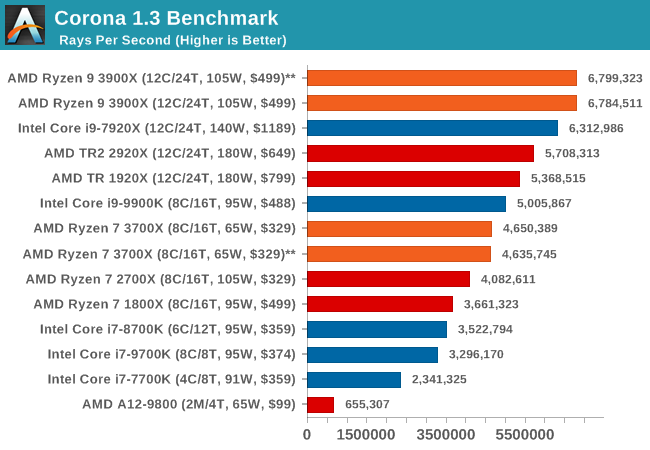
LuxMark v3.1: LuxRender via Different Code Paths
As stated at the top, there are many different ways to process rendering data: CPU, GPU, Accelerator, and others. On top of that, there are many frameworks and APIs in which to program, depending on how the software will be used. LuxMark, a benchmark developed using the LuxRender engine, offers several different scenes and APIs.

Taken from the Linux Version of LuxMark
In our test, we run the simple ‘Ball’ scene on both the C++ and OpenCL code paths, but in CPU mode. This scene starts with a rough render and slowly improves the quality over two minutes, giving a final result in what is essentially an average ‘kilorays per second’.

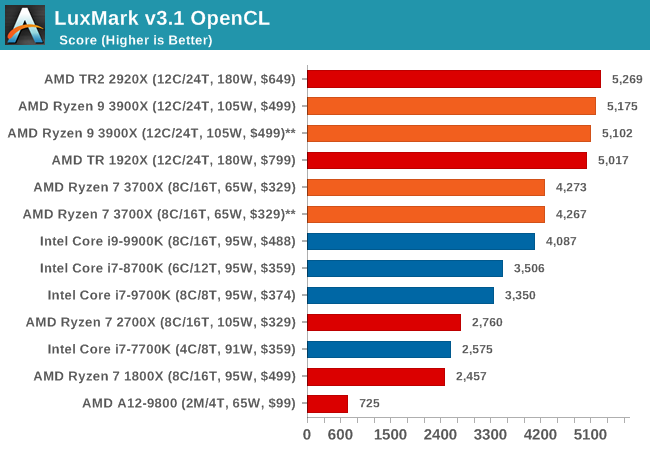
POV-Ray 3.7.1: Ray Tracing
The Persistence of Vision ray tracing engine is another well-known benchmarking tool, which was in a state of relative hibernation until AMD released its Zen processors, to which suddenly both Intel and AMD were submitting code to the main branch of the open source project. For our test, we use the built-in benchmark for all-cores, called from the command line.
POV-Ray can be downloaded from http://www.povray.org/
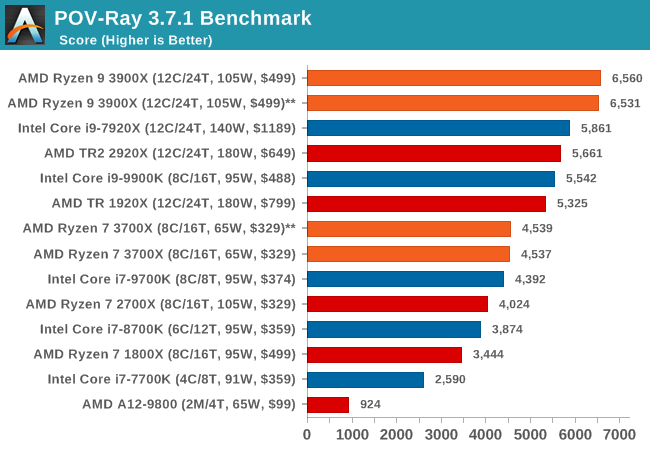
Cinebench R15
The latest version of CineBench has also become one of those 'used everywhere' benchmarks, particularly as an indicator of single thread performance. High IPC and high frequency gives performance in ST, whereas having good scaling and many cores is where the MT test wins out.
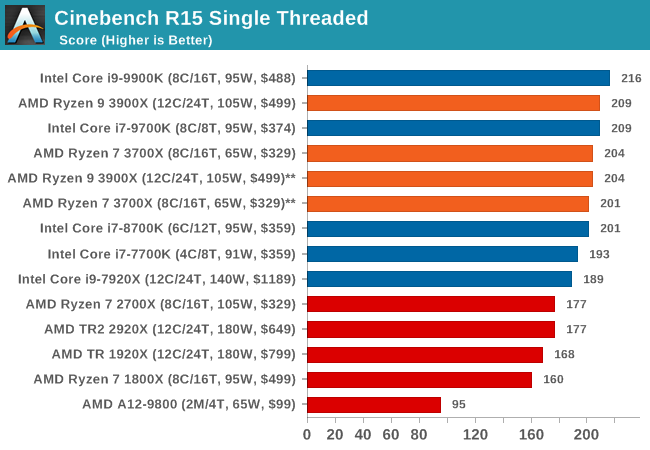
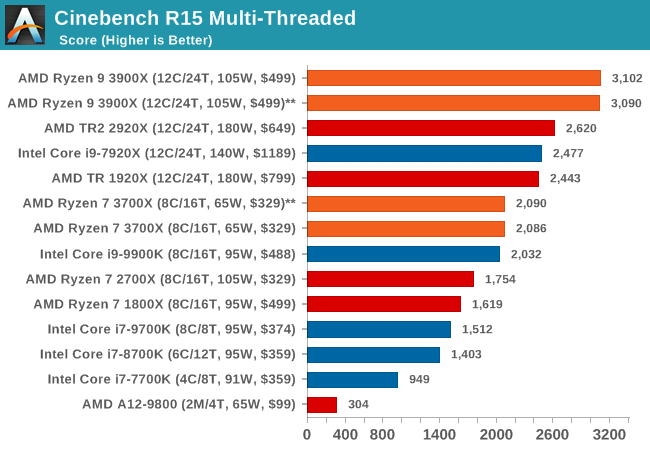











447 Comments
View All Comments
Mugur - Monday, July 8, 2019 - link
You don't know what boost means, then... All cores overclock has nothing to do with boost.Xyler94 - Monday, July 8, 2019 - link
Now I know you're an idiot. That's single core boost, not all core. Intel doesn't even state all core boost... except on a single product, the 9900KS, which is a last ditch effort to be like "Hey guys, we can hit 5ghz all core! don't look at the Ryzen Chips... please!"FYI, AMD hit 5ghz all core before Intel did, with the terrible FX9590 or something like that. It was not a good CPU.
Tkan215 - Monday, July 8, 2019 - link
this mean AMD can have great clock boost easily with time if intel can go from 4.0 to 5.0 ghz wall . Amd most likely can in the futuresor - Sunday, July 7, 2019 - link
The gaming benchmarks are mostly flat, AMD and Intel within a 1-2% margin of error.If you look at the one big win for Intel, do you have a 712hz monitor that AMD just can’t keep up with at a paltry 655fps?
Korguz - Sunday, July 7, 2019 - link
Maxiking still faster by 5%, and probably costing MORE for that 5%.. no thanks... seems intel is also dreaming about 5 ghz. you are criticizing amd for doing something they havent really been able to do in years.. so go by intel cpus, and pay a lot more....Mahigan - Sunday, July 7, 2019 - link
Wow.. you're angry. I think you take this far too seriously.wilsonkf - Sunday, July 7, 2019 - link
Are the tests re-run on Intel CPUs? 9900K seems to be losing more ground to 9700k than when they were launched. Is it the effect of patches on Intel HT CPUs?RSAUser - Monday, July 8, 2019 - link
Comment above Anand tech states no zombie mitigation, plus not 1903 which forces those patches to be enabled.Meteor2 - Sunday, July 14, 2019 - link
Might be related to the Spectre patches. Can't remember the timing between those and the 9000 series.spaceship9876 - Sunday, July 7, 2019 - link
I was hoping that you would clock the 2700x, 3700x and intel chip with the same manual clock speeds so that we can see a real IPC comparison between zen+, zen2 and intel.